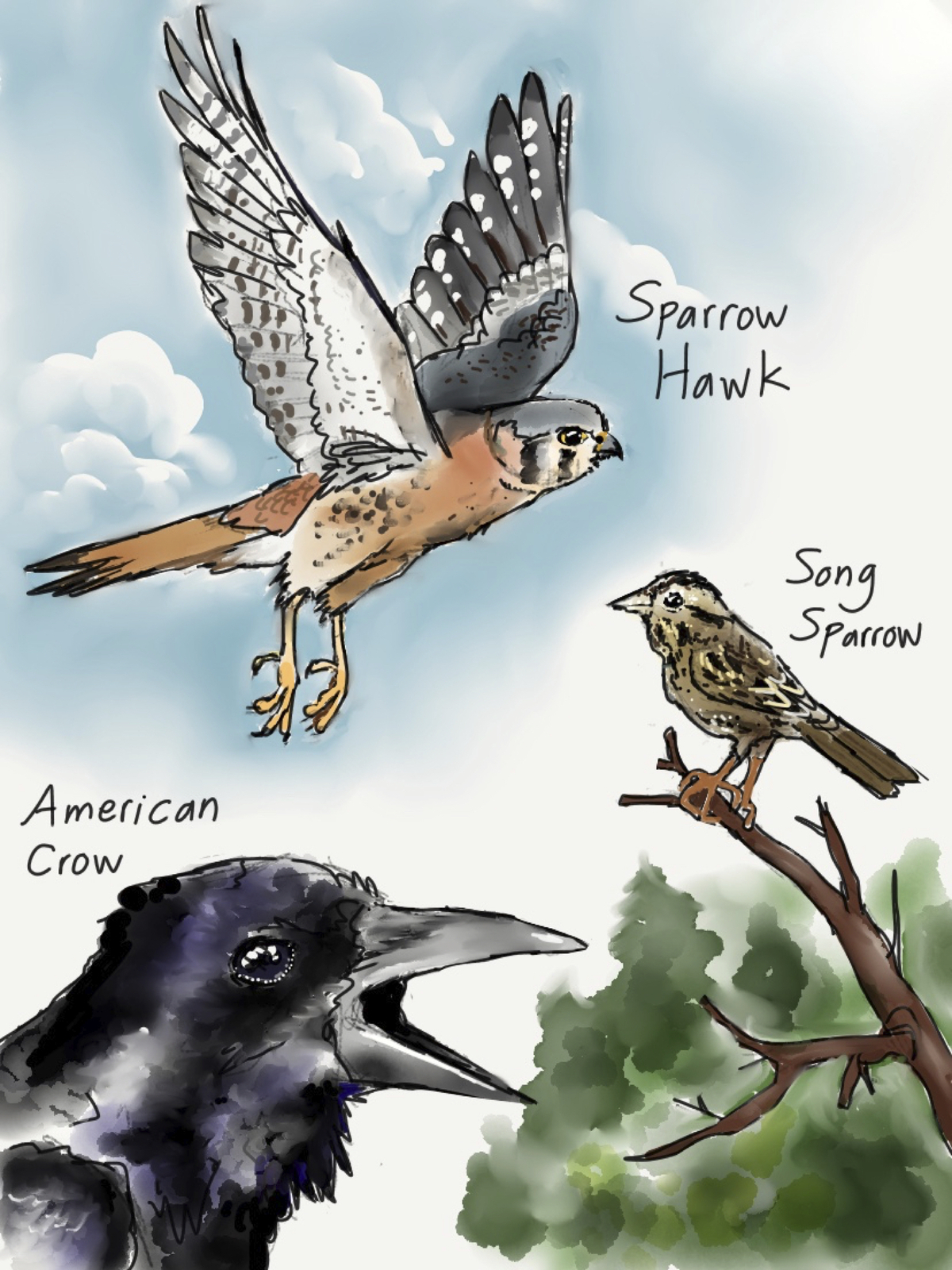
Lewis & Clark is fortunate to have an abundance of natural beauty. With gardens, forests, water and Tryon State Park within walking distance of the dorms, the LC campus provides especially wonderful opportunities for birdwatching.
Birds may seem mundane due to their commonness, but they are remarkable creatures. They can have personalities, likes and dislikes, and be extremely emotive.
The crows on campus exemplify this. They can be seen playing and talking to each other and have happily adapted to cohabitating with students. They can even be befriended with enough commitment and food offerings.
Ravens, on the other hand, tend to be more solitary. They are larger than crows, have a deeper croaking call and are rarer in the Portland area.
American kestrels can also be seen year-round near campus and are often found on telephone wires. As the smallest birds of prey in North America, they have clear features distinct to falcons, including a sharp beak and talons. Males have patriotic red, white and blue plumage with black spots, while females have a more camouflaged plumage. American kestrels have a vertical black line under their eyes, which contrasts against their white feathers and blue-grey heads. They are also one of the few birds that can be used for falconry in Oregon.
Just north across the river in Washington is Ridgefield National Wildlife Refuge. Nicholas Dill ’24, a local remote student, recently went there to visit and photograph birds. During the visit, he saw a huge population of swans.
“In general, I’m pro-bird,” Dill said. “(The refuge is) basically a big swamp with a ring road you drive on. I went there to take pictures of birds and have a relaxing break from studying.”
The recent ice storm saw the damage and loss of many trees on campus, which may impact the amount of birds that come to nest and perch as they pass through. Thankfully, plans have already been made by some of LC’s outdoor-oriented clubs to continue attracting birds to campus.
“There’s been a lot of nice (birds),” Garden Club Co-President and SEED Vice President Mateo Kaiser ’23 said. “Garden Club puts out feeders. (SEED) also (wants) to build some birdhouses with Tiny House Club.”
One of the smaller birds that feeders would help to attract are hummingbirds. Anna’s hummingbirds are the only kind that can be found in Portland year-round. The species is easily identifiable by their iridescent green feathers and bright pink heads on males. Though it would be more rare, it is also possible to spot a Rufous hummingbird near campus, which are mostly brownish-red with some white on their neck.
Dark-eyed juncos, song sparrows, spotted towhees and northern flickers are all fairly commonplace in the bushes and lawns near buildings. Identifying these birds can be difficult, but there are tools to make it easier. One such tool is Merlin Bird ID by the Cornell Lab of Ornithology. This app gives you all the birds in your area and can give some options to identify birds by photos. On top of detailed descriptions, the app also provides different bird calls and has a way for you to keep track of bird sightings.
Located on the other side of the city from campus is the Portland Audubon Society. Not only do they have a large trail system, but they also have birds used for educational purposes which for one reason or another cannot be returned to the wild.
Aristophanes the raven and Ruby the turkey vulture can be visited at their enclosures. According to a staff member of the Audubon, Aristophanes can speak but usually chooses not to and Ruby is scared of the mail truck and projectile vomits as a defense response. The trails surrounding the Audubon Society are a fantastic place to easily make your way into the heart of a forest to look for birds, and their center provides plentiful resources for education and volunteer work related to ornithology and caring for injured birds.
Birdwatching is a fun and unobtrusive activity that can easily be practiced socially-distant. By going to Tryon or just a bit further, you can see dozens of species of birds. All you need is some time and attention.
Subscribe to the Mossy Log Newsletter
Stay up to date with the goings-on at Lewis & Clark! Get the top stories or your favorite section delivered to your inbox whenever we release a new issue.

Leave a Reply